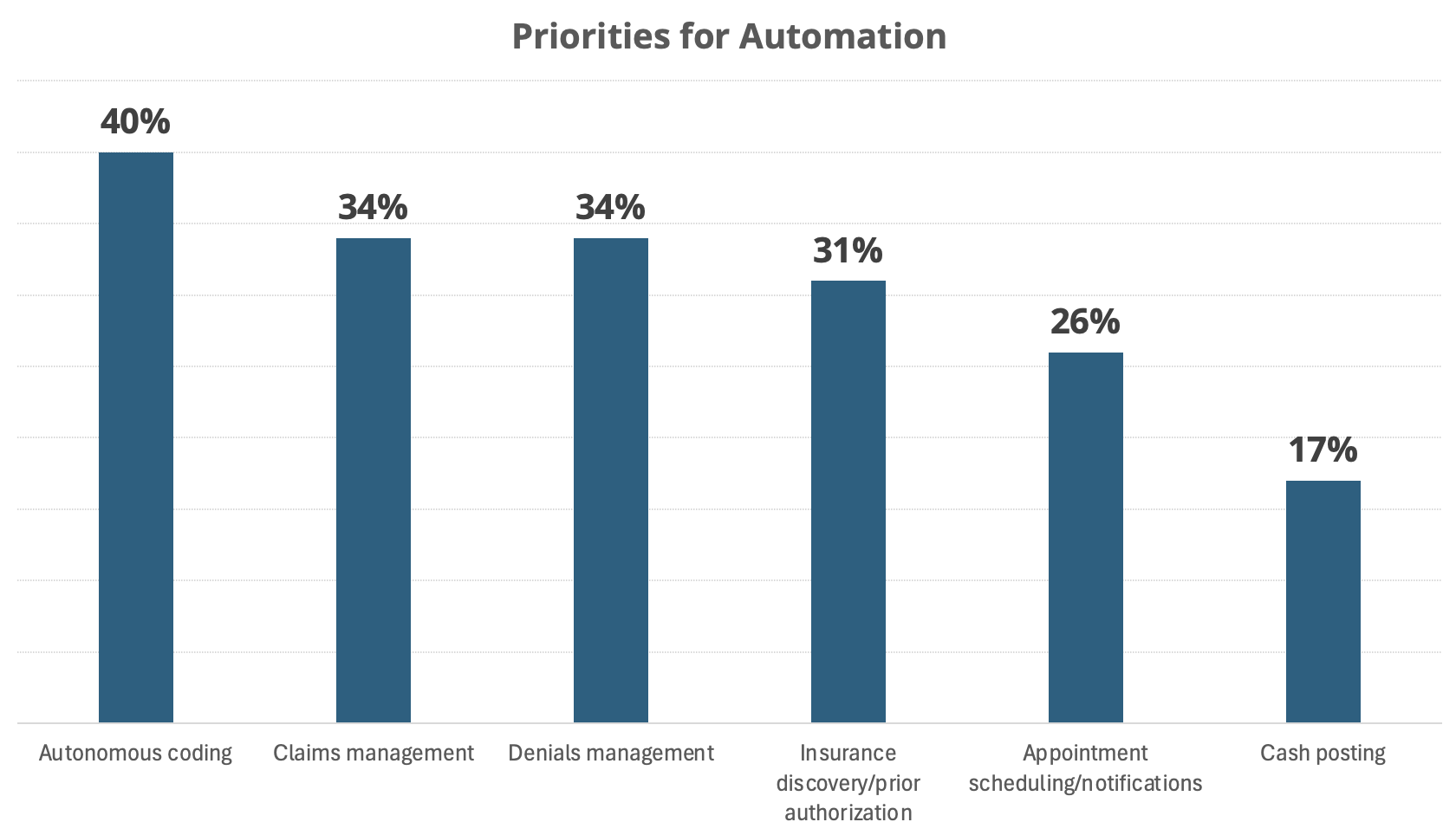- Solutions
Healthcare
- Resources
Strategies for Effective Revenue Cycle Automation – Start Small

Automation in the health care revenue cycle continues to be top of mind for executive leaders looking to streamline operations and make up for the ongoing staffing shortages that are a major issue in health care. They recognize that technology is the answer, but unfortunately the answer is not that simple.
Many organizations have had failed automation attempts. And it has happened for a variety of reasons including choosing to automate already broken processes, adopting an “automate everything” approach which was doomed for failure from the start, or not making automation decisions based on data that would lead to incremental success for their organization while also providing quantifiable ROI. In addition, many organizations are in a ‘once bitten, twice shy’ situation due to a failed vendor partnership that overpromised and underdelivered.
KLAS, a prominent market research firm, just released their latest findings on the top priorities as well as barriers to automation in 2024. The findings are no surprise.

If you think about denials that occur for missing itemized bill as an example, it is an ideal candidate for automation. By looking at the data and understanding specific payer policies it can be easily determined where there are high volume denials for this reason, coupled with the fact that the payer requires an itemized bill for all claims with billed charges greater than $50K. Starting small and automating a single distinct process and payer allows organizations to succeed and then expand their strategy.
But the approach is not without barriers. Operating margins across the country in health care are still razor thin and the cost of automation is sometimes simply too high. Automations are not a one-time cost. Bots break. They require ongoing maintenance and monitoring as portals change to prevent failure. And there are so many competing priorities that revenue cycle teams that are already understaffed just may not have enough hours in the day to tackle yet another project. Finally, based on CFO guidance there is reluctance to sign any vendor agreement that doesn’t have a guaranteed ROI.
The good news is that done correctly, automations do work and can bring tremendous operational efficiency and value. They are a necessary tool in the revenue cycle toolbox that helps solve today’s challenges. Success lies in starting small, adopting a data driven strategy and partnering with a vendor that has a proven track record for delivering hard ROI around automation.
Interested in learning more? The team at VisiQuate is focusing on how we can help hospitals optimize their revenue cycle management. Visit our Revenue Cycle Playbook for step-by-step plays to help you stay on top of the ever-changing landscape of healthcare revenue cycle, or contact us to schedule a demo.
Other featured posts
© 2024 VisiQuate, Inc. All Rights Reserved.







